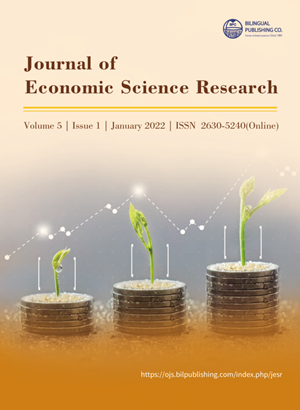Research on the Leading Value Drive of Rural Homestead Transfer under Rural Revitalization——Based on the Evidences of China
DOI:
https://doi.org/10.30564/jesr.v5i1.4105Abstract
With the development of urban-rural integration in China, the functional value of homestead bases has evolved from a single residential security value to a multiple composite values, and the property income of homestead bases has gradually become the value driver of transfer and the intrinsic demand of farm households. This paper takes Baitafan of Jinzhai County, Chongqing City, and Xiaofang Yu Village of Ji County as examples for in-depth discussion, and finds that the dominant value drivers of home base transfer mainly include three kinds: capitalization income, commercialization income, and non-farm employment income. The study concludes that it is important to give full play to the resource endowment effect and identify the dominant value of home base transfer according to local conditions to promote the standardized home base transfer and implement the rural revitalization strategy.
Keywords:
Homestead transfer; Rural revitalization; Farmers' income; Value pathReferences
[1] Qi Qi, Xu Xiaofeng, Yang Chunmei, Zhang Ye, Lin Shuda, Hu Yingen, 2020. Study on the mechanism and mode of functional transformation of house bases in the context of rural revitalization--a case study based on typical villages[J]. China Land Science, 34(06):84-93.
[2] Wu Di, Zhao Sufang, 2020. Sorting and pilot analysis of the model of home base use right transfer--based on SWOT analysis method[J]. Journal of China Yan'an Cadre College, v.13:No.77(05):131-138.
[3] Yu Rong, Wang Yapeng, 2020. Economic analysis of land transfer type affecting rural labor transfer mechanism--an empirical study based on 2290 village level questionnaires nationwide[J]. Exploration on Economic Issues, (03):20-32.
[4] Liu, Weibai, Li Zhong, 2019. Policy evolution, model comparison and path selection of the reform of the house base system[J]. China Administration, (09):152-154.
[5] Wei Hui, Gong Qianwen, 2020. The main types of idle rural house bases and classification management countermeasures[J]. World Industry, (10):13-19+135.
[6] Lou Wenlong, Zhou Haixin, Zhang Juan, 2018. Research on the articulation model of migrant workers home base transfer and housing security under the perspective of linking people and land[J]. Agricultural Economy, (05):92-94.
[7] Tang Qinghui, Dong Dekun, Zhu Shan, 2015. Exploration on the innovation of rural land value-added income distribution mechanism under the perspective of land property rights protection[J]. Journal of Theory, (09):16-18.4
[8] Zhang Menglin, 2017. Research on the evolutionary mechanism of rural home base transfer model[J]. Rural Economy, (05):13-18.
[9] Wu Shuang, 2019. Legal reflections on the practice of rural home base withdrawal[J]. Study and Practice, (08):17-24.4
[10] Shangguan Caixia, Feng Shensi, Lv Peilu, Qu Futian, 2014. Regional differences in home base replacement patterns and their causes from the perspective of transaction costs[J]. China Population-Resources and Environment, 24(04):107-115.
[11] Zhou Jiangmei, Huang Qicai, Wang Ying, 2019. Equilibrium of interests in the off-site transfer of farmers' homestead saving indicators under the vision of common and shared development[J]. Rural Economy, (12):66-72.
[12] Wu Yuling, Shi Hui, Wang Mei, Feng Zhongqi, 2018. Rural heterogeneous resource endowment, the rural homestead use right determination and farmers' trural homestead transfer:theory and experience from Hubei Province[J]. Cohina Rural Economy, (05):52-67.
[13] Zhang Y, Bao T, 2017. Analysis of the driving force of rural homestead withdrawal - based on push-pull theory perspective[J]. Rural Economy, (04):18-23.
Downloads
Issue
Article Type
License
Copyright and Licensing
The authors shall retain the copyright of their work but allow the Publisher to publish, copy, distribute, and convey the work.
Journal of Economic Science Research publishes accepted manuscripts under Creative Commons Attribution-NonCommercial 4.0 International License (CC BY-NC 4.0). Authors who submit their papers for publication by Journal of Economic Science Research agree to have the CC BY-NC 4.0 license applied to their work, and that anyone is allowed to reuse the article or part of it free of charge for non-commercial use. As long as you follow the license terms and original source is properly cited, anyone may copy, redistribute the material in any medium or format, remix, transform, and build upon the material.
License Policy for Reuse of Third-Party Materials
If a manuscript submitted to the journal contains the materials which are held in copyright by a third-party, authors are responsible for obtaining permissions from the copyright holder to reuse or republish any previously published figures, illustrations, charts, tables, photographs, and text excerpts, etc. When submitting a manuscript, official written proof of permission must be provided and clearly stated in the cover letter.
The editorial office of the journal has the right to reject/retract articles that reuse third-party materials without permission.
Journal Policies on Data Sharing
We encourage authors to share articles published in our journal to other data platforms, but only if it is noted that it has been published in this journal.




 He Huang
He Huang

